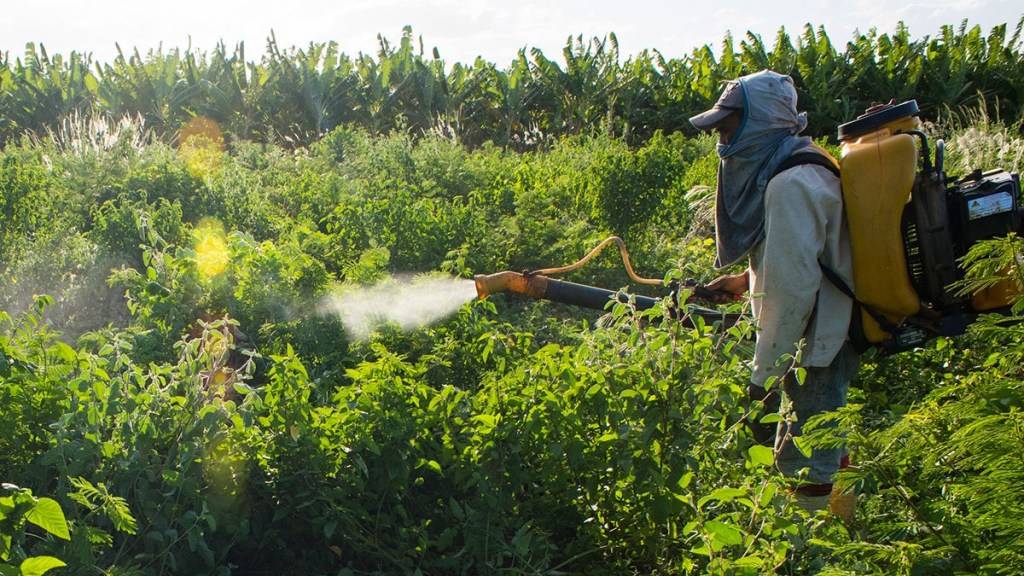– By Vimal Kumar Alawadhi
With the growing population and shrinking agricultural fields in India, the need to boost food production on existing farmland has become more pressing than ever. To meet this burgeoning demand, Indian farmers have increasingly turned to agrochemicals, achieving significant results. From a mere 52 million tonnes of food grains in 1951-52, India’s production soared to 329.68 million tonnes in 2022-23. This substantial increase has enabled India to satisfy domestic demand and become a notable food exporter. This success is largely attributed to Indian farmers’ openness to new technology and innovative solutions, particularly in agrochemicals.
Historically, “food security” and “food safety” were distinct terms: food security was associated with developing countries, while food safety was a major concern for developed countries. Initially, developing countries like India prioritized higher yields at any cost, but now both developed and developing countries are focusing on safe and non-toxic food products. This shift is largely influenced by the agricultural practices employed in the fields both before and after harvesting. Today, India is actively adopting sustainable agricultural practices to ensure both food security and food safety. Innovation and research are playing a pivotal role in this transition, driving the development of new agrochemical formulations, delivery methods, and application techniques that are both efficient and environmentally friendly.
The cornerstone of sustainable agriculture lies in continuous innovation and research. Indian scientists and agrochemical companies are dedicated to creating novel formulations that reduce environmental impact while maintaining high efficacy. These new formulations often incorporate biodegradable ingredients and exhibit lower toxicity levels, making them less harmful to non-target species and the ecosystem. Significant research advancements have led to the development of controlled-release agrochemicals. These formulations release active ingredients gradually, reducing the need for frequent applications and minimizing runoff into water bodies.
Furthermore, breakthroughs in nanotechnology have enabled the production of nano-agrochemicals, which offer targeted delivery and enhanced absorption, thereby reducing the quantity of chemicals required. As a novel approach, nanotechnology offers eco-friendly and non-hazardous pesticides that are safer and more reliable compared to traditional pesticides, marking a significant advancement in plant protection. Nanoparticles are less toxic and effective against various agricultural pests. Combining traditional chemicals with nanoparticles enhances their efficacy.
A holistic approach to agrochemical use is essential, balancing immediate agricultural needs with long-term sustainability. This approach includes ensuring the well-being of farmers and the environment. Sustainable agrochemical solutions focus on maintaining soil health, preserving water quality, and protecting biodiversity. Educating farmers on the proper use of these innovative agrochemicals is crucial. Training programs emphasizing integrated pest management (IPM) and judicious chemical use can foster more sustainable farming practices. With a balanced approach that integrates organic methods with modern agrochemicals, farmers can achieve optimal yields while protecting the environment.
Innovations that reduce farmers’ exposure to harmful chemicals also enhance their well-being. Safer-to-handle formulations and application technologies that minimize direct contact are significant steps forward. Ensuring farmers’ health and safety is an integral part of sustainable agricultural practices. Precision agriculture is transforming agrochemical application, making it more efficient and less wasteful. Innovations in precision application technologies, such as drones, GPS-guided equipment, and variable-rate technology (VRT), are at the forefront of this revolution.
Drones equipped with advanced sensors and imaging technologies can monitor crop health in real-time, accurately identifying pest infestations or nutrient deficiencies. This capability allows for the targeted application of agrochemicals, ensuring treatment only in affected areas and reducing overall chemical use. GPS-guided equipment ensures the exact placement of agrochemicals, promoting uniform application and minimizing overlap. Variable-rate technology adjusts chemical application based on the specific needs of different field zones, optimizing resource use and reducing environmental impact.
Integrating innovative agrochemical formulations, a holistic approach to sustainability, and precision application technologies is ushering in India’s new era of sustainable agriculture. These advancements boost agricultural productivity, safeguard the environment, and improve farmers’ well-being. As research and innovation progress, India is well-positioned to lead in sustainable farming practices, ensuring a healthier future for its people and the planet. This progressive path underscores the need for ongoing support for research, farmer education, and the adoption of cutting-edge technologies to maintain the momentum toward sustainable agriculture.
(Vimal Kumar Alawadhi is the Managing Director at Best Agrolife Ltd.)
(Disclaimer: Views expressed are personal and do not reflect the official position or policy of Financial Express Online. Reproducing this content without permission is prohibited.)


